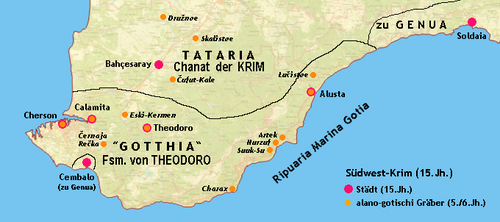가상 제어 프로그램 인터페이스
Virtual Control Program Interface| 약어 | VCPI |
|---|---|
| 상태 | 출판된 |
| 년도시작 | 1989; 전 ( |
| 조직 | Phar Lap Software, Quaddeck Office Systems, A.I. Architects, Lotus Development Corporation, Quadram, Qualitas, Rational Systems |
| 도메인 | 응용 프로그램 프로그래밍 인터페이스 |
컴퓨팅에서 VCPI(Virtual Control Program Interface)는 Phar Lap Software가 1989년에 발표한 규격으로 DOS 프로그램을 보호 모드로 실행할 수 있게 하여 실제 모드에서 사용할 수 없는 프로세서의 많은 기능에 대한 액세스를 허용한다.VCPI가 윈도 3.0의 보호 모드에서 작동할 수 없기 때문에 도입 직후 DOS 보호 모드 인터페이스(DPMI)로 대체되었다.
개요
1987년부터 쿼터덱 오피스 시스템과 협력하고 A의 지원을 받아 개발되었다.I. 건축가, Lotus Development Corporation, Quadram, Qualitas 및 Rational Systems, VCPI는 DOS의 확장 메모리 관리자(예: CEMM, QEMM, 이후 EMM386)에 의해 제공되며 80386 보호 모드 DOS 확장기가 80386 EMS 확장 메모리 에뮬레이터와 공존할 수 있도록 한다.DPMI가 이 프로그램을 삭제한 것은 가장 두드러진 이유는 윈도 3.0의 네이티브 보호 모드(일명 386 강화 모드)에서 실행되는 DOS 프로그램에 대해 지원되지 않았기 때문이며, VCPI는 링 0에서 프로그램을 실행하기 때문에 x86 보호의 목적을 저하시켰기 때문이다.OS/2 2.0 이상에서도 작동하지 않았다.VCPI는 윈도우즈 3.0 리얼 모드에서만 지원되었으며,[1] 일부 프로그램은 윈도우즈 3.x 표준 모드에서 실행될 수 있었다.[2][3][4]표준 모드(286 모드) 윈도우즈 3.1(3.0은 아님) 자체는 VCPI 호환(VCPI 클라이언트)이었다.[5]이전의 윈도우/386 2.1은 DOS 확장기와 전혀 호환되지 않았다.윈도우즈 NT DOS 상자도 VCPI를 지원하지 않았다.[6]
또한 VCPI는 가상 8086 모드 작업 내에서 이미 실행 중인 DOS에서 프로그램을 시작할 때만 보호 모드 DOS 프로그램을 실행할 수 있도록 허용했다는 점에서 비교적 제한된 범위를 가지고 있었다.(이는 일반적으로 프로세서를 위한 가상 [모드] 제어 프로그램으로 작동하는 메모리 관리자를 통해 수행되었다.)가상 8086 모드는 프로그램을 하드웨어로부터 격리시키기 때문에, 프로그램이 제어 프로그램의 일부 지원 없이 보호 모드로 전환하는 것은 불가능하다.
확장 VCPI
1989년과 2월 1990[7]사이 대체 규격은 이름 확장 VCPI[8][9][10](XVCPI[8][9][11])에서 그룹 계열사들의 인텔의 소프트웨어 포커스 Group,[7][9][10]Lotus,[7]디지털 Research,[7]대화형 시스템 Viewport 국제, 그레이, 어떤 VCPI의 단점을 해결 등을 포함한 다수에 의해 제시되었다.그리고 더 나은 메모리 경영을 이용하다386 프로세서의 nt 및 멀티태스킹 기능.[10]그것은 인터랙티브 유닉스, Concurrent DOS 386과 같은 운영 체제를 포함한 소수의 제품에서 사용되었다.[nb 1]1990년[7] 2월 이후 이러한 노력은 결국 1990년 5월에 DPMI 규격의 (병렬) 개발 및 간행으로 굴복하여 유사한 문제를 해결하였으나 같은 해에 출시될 마이크로소프트 윈도 3.0의 구현과 호환되었다.1991년 2월, 1990년 7월에 결성된 이니셔티브인 Multiuser DOS Federation(MDOS)은 DPMI에 대한 지지와 관련한 성명을 발표했다.[12][7]
참고 항목
- DOS 보호 모드 인터페이스(DPMI)
- DOS 보호 모드 서비스(DPMS)
메모들
- ^ NB. VCPI와 마찬가지로 XVCPI API는
INT 67h, AH=DEh, 그러나 함수 번호의 다른 집합을 가지고 있다.XVCPI 설치 검사:- 입력
AX=DE40h; INT 67h;- 반품
- AH=00h (설치됨), BH=메인버전, BL=하위버전.
- 입력
AX=DE43h; INT 67h;- 반품
- DX=사용 가능한 4KB 페이지 수입니다.
참조
- ^ "KB81493: Using VCPI Programs with Windows". Microsoft Corporation.
Many MS-DOS-based applications use the Virtual Control Program Interface (VCPI) specification […] These programs do not work with Microsoft Windows version 3.0 in 386 enhanced mode. They work in Windows in real mode and may work in standard mode.
{{cite web}}: CS1 maint : url-status (링크) - ^ "KB64478: Mathematica 387 and Mathlab 386 with Windows 3.0". Microsoft Corporation. Archived from the original on 2012-10-26.
These programs use the VCPI […] to access extended memory that conflicts with Windows in protected mode (standard and enhanced).
- ^ "KB82298: Windows 3.1 Standard Mode and the VCPI". Microsoft Corporation. Archived from the original on 2013-03-09.
[…] an MS-DOS-based application that uses extended memory probably will fail to run in the standard-mode MS-DOS box.
- ^ "KB86018: Windows 3.1 Has Limited Support for VCPI". Microsoft Corporation. Archived from the original on 2012-10-26.
It is possible to run some VCPI applications in standard mode.
- ^ "KB81476: MS-DOS Customers Who Want Windows 3.1 EMM386.EXE". Microsoft Corporation. Archived from the original on 2012-10-26.
Standard mode Windows 3.1 is VCPI-compliant; standard mode Windows 3.0 is not.
- ^ "KB101780: VCPI Not Supported in Windows NT". Microsoft Corporation. Archived from the original on 2012-10-26.
VCPI […] is not supported in Windows NT.
- ^ a b c d e f Wurthmann, Gerold, Wopperer, 베른하르트, Wiesböck, 요한(1991년)."다이 DPMI-Spezifikation 아이네 클라이네 Einführung –"[그 DPMI 규격에 대한 소개].Vorträge Begleittexte zum 2.Entwicklerforum, Elektronik Thema:PC-Architektur, 17zum 설계 및 재산.9월 1991년, 뮌헨(책)(독일어로)(1판)[179월 1991년 Presentations과 PC구조에 두번째 개발자 포럼을 보조 재료, 뮌헨].뮌헨 독일:마르크트 &, Technik 출판사. Aktiengesellschaft. 우편 223파운드.(NB다.이번 포럼은 독일 잡지 디자인 및에 의해;Elektronik과 인텔.)조직되었다.
- ^ a b Duncan, Ray (1991-02-12). "Power Programming - An Introduction to the DOS Protected Mode Interface". PC Magazine. 10 (3): 367–371, 369. Retrieved 2016-05-21.
[…] The creators of the VCPI were well aware of its limitations and were already hard at work on a second generation specification called Extended VCPI (XVCPI), when Microsoft barged onto the scene with the beta-test versions of Windows 3.0 and its DPMI. For a few months it appeared that the fledgling DOS extender market would fragment into two mutually exclusive directions […] Microsoft turned control of the DPMI specification over to an industry committee with open membership, and the backers of the XVCPI effort decided to join forces behind the DPMI. […] Microsoft agreed to delete the portions of the DPMI that crossed into DOS extender territory - specifically, direct support of the DOS and ROM BIOS interrupts in protected mode. Consequently, DPMI, Version 0.9, the first public version, released by the DPMI Committee in May 1990, defines only the low-level or building-block functions […] Naturally, the higher level or DOS extender interface of Windows 3.0 still exists, but it has receded into the twilight zone of undocumented functionality. Undocumented, but hardly unusable […]
- ^ a b c Duncan, Ray; Petzold, Charles; Schulman, Andrew; Baker, M. Steven; Nelson, Ross P.; Davis, Stephen R.; Moote, Robert (1992). Extending DOS: A Programmer's Guide to Protected-Mode DOS. 2 (2 ed.). Addison-Wesley Publishing Company, Inc. ISBN 0-201-56798-9.
- ^ a b c The DPMI Committee (1991-03-12). DOS Protected Mode Interface (DPMI) Specification - Version 1.0 - Application Program Interface (API) for Protected Mode DOS Applications (PDF). 1.0. Intel. pp. 4–5. Intel order code 240977-001. Archived from the original (PDF) on 2013-05-31. Retrieved 2013-05-24.
The initial DPMI prototype was developed by Microsoft for Windows version 3.0, with input from Lotus Corporation and Rational Systems, as part of a general effort to enhance Windows' performance by allowing the Windows kernel to run in extended memory. In parallel, Intel was working with manufacturers of multitasking environments, EMS emulators, and DOS extenders to ensure that an extended VCPI specification could fully utilize the 80386's virtualization and protection features. In February 1990, the parties involved in the above activities agreed to form the DPMI Committee and formulate an industry-wide standard for protected-mode DOS applications. The Committee released the first public DPMI Specification, Version 0.9 in May 1990.
- ^ Brothers, Hardin (November 1992). "Breaking the 1M/640K Barrier - Accessing and using extended memory from DOS applications" (PDF). ComputerCraft. 2 (11): 16–21, 20. 0-74820-08559-11. Retrieved 2016-05-21.
[…] By 1990, the VCPI standard had been adopted by virtually all DOS-based programs that were specific to 386 and 486 CPUs-except programs from Microsoft. The VCPI committee was working on an upgrade to VCPI that would have been called XVCPI (X for Extended) when Microsoft released beta copies of Windows 3.0 […] Included in Windows 3 is the DPMI, or DOS Protected Mode Interface, a more general solution to running protected-mode, DOS-extended and real-mode applications simultaneously. At first, DPMI seemed like a competitor to XVCPI, and there were threats of lawsuits and chaos in the DOS-extender field. When Microsoft turned over control of DPMI to an industry committee with open membership, XVCPI supporters joined the committee, making DPMI a de facto industry standard. […] DPMI version 0.9 appeared in Windows 3.0 […]
- ^ "NetWorld 90 - NetWorld: Multi-Vendor Answers". Communications News. Nelson Publishing / Gale, Cengage Learning. 1990-11-01. Archived from the original on 2018-08-20. Retrieved 2014-09-10.
추가 읽기
- Virtual Control Program Interface: Version 1.0. 1.0. Phar Lap Software, Quarterdeck Office Systems. 1989-06-12. Retrieved 2016-05-21.
{{cite book}}: CS1 maint : url-status (링크)


